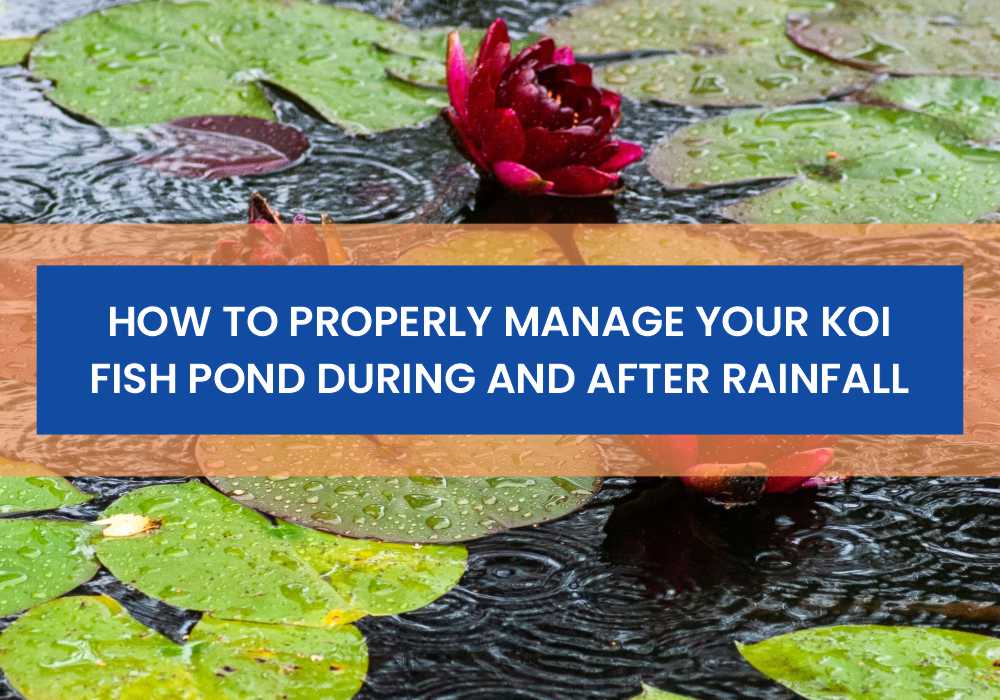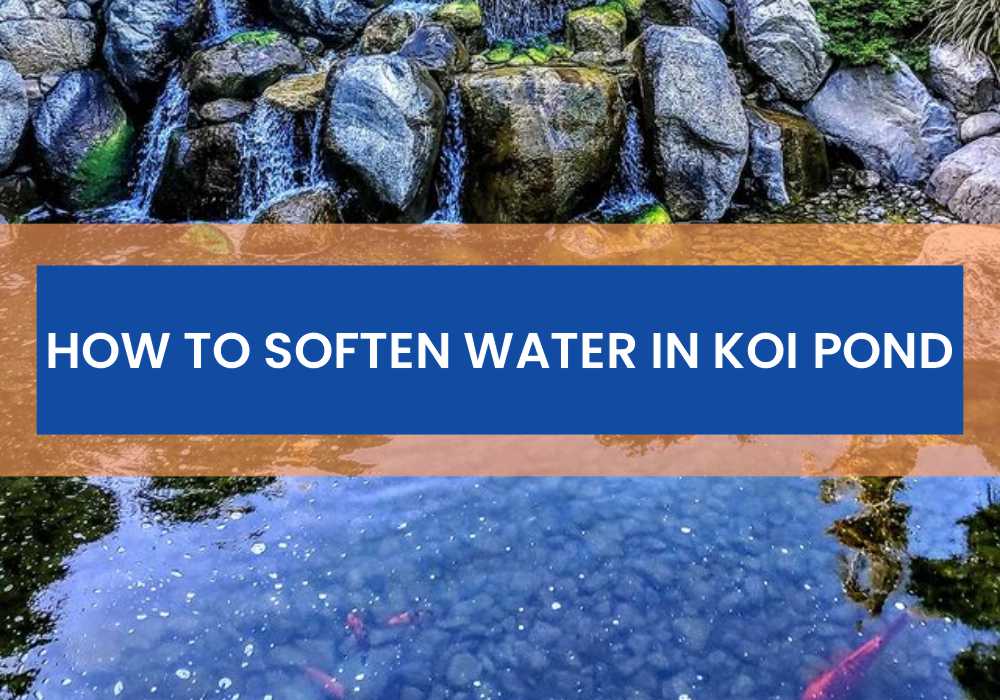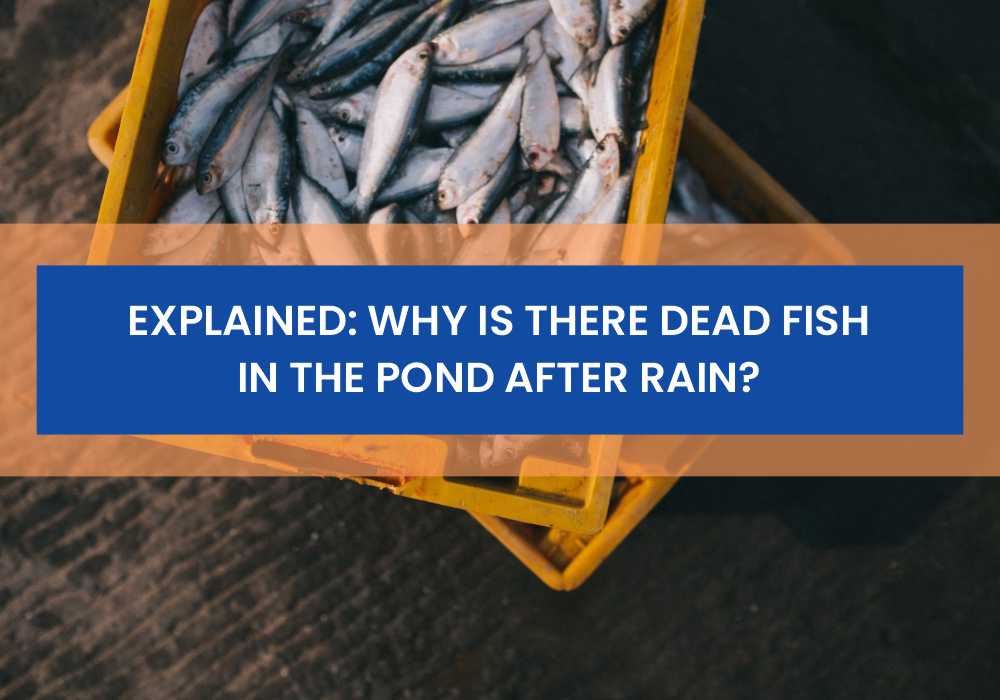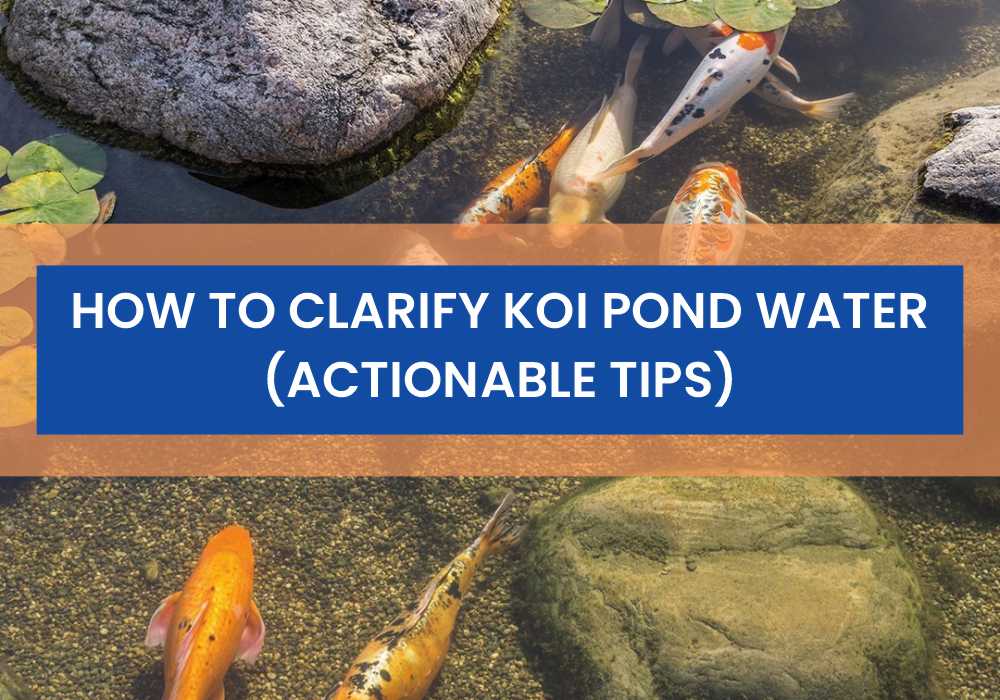As an Affiliate, We may earn a commission that doesn't cost you extra from qualifying purchases using links in this post. It helps keeps this blog running.
Nature is undefeated and sometimes, our plans and arrangement will get disrupted by the forces of nature. One of the most common and well-known natural phenomena is rainfall.
For many koi pond owners, rainfall can be a source of worry and stress because it can potentially cause a lot of problems for their beloved fishes. In this article, we will discuss some of the key points on how to manage your koi pond during and after rainfall.
Koi can be very sensitive to changes in their environment and even a small change can cause them a great deal of stress. This is why it’s important to take extra care of your koi when bad weather is expected or when it’s already happening.
Why Is It Important To Manage Your Koi Pond During And After Rainfall?
Managing and monitoring what’s going on in your pond during and after rainfall is very important for several reasons because as good as rainfall is it can also cause a number of problems for koi fish ponds.
Some of the 8 reasons why you should monitor and manage your pond during and after rain are as follows:
1) Overflowing & Flooding:
Heavy rains can quickly fill up a pond causing it to overflow, leading to flooding which can not only harm or even kill your fish but also potentially damage properties.
2) Debris:
Heavy rainfall can often bring dirt and other debris into the pond, which can pollute the water and make it unsafe for your fish to swim in. Leaves, twigs, and other debris can also clog filters and pumps, making it difficult for water to circulate properly. This can lead to stagnant water, which is a breeding ground for harmful bacteria.
3) Algae blooms:
Excess nutrients in the water (from rainwater runoff or leaving fish food in the pond) can cause algae blooms. These blooms can block sunlight from reaching aquatic plants, leading to die-offs, and they can also make the pond water uncomfortable for fish to swim in.
4) Alteration in pH levels:
Rainfall can also change the pH levels of the water, making it either too acidic or too basic for your fish to survive in. It’s important to regularly test the pH of your pond water and make adjustments as needed.
5) Change in oxygen levels:
Heavy rains may also disrupt the dissolved oxygen levels in the water, making it difficult for fish to breathe. This is why it’s important to have an aeration system in place to help maintain proper oxygen levels.
6) Introduce new pests:
Flooding can also bring new pests into the pond, such as snakes, rodents, and insects. These pests can not only just harm your fish, but they can also spread disease.
7) Electric shocks:
If you have an electrical system near your pond, be aware that rain can increase the risk of electric shocks. Water and electricity don’t mix, so it’s important to take precautions to avoid any accidents.
8) Disease:
Flooding can also cause disease in fish, as harmful bacteria and parasites can be brought into the pond water. This is why it’s so important to monitor your pond during and after rainfall, so you can take steps to mitigate any risks to your fish.
Monitoring and managing your koi pond during and after rainfall is essential to keeping your fish healthy and safe. By taking some simple precautions like clearing debris, monitoring pH levels, keeping an eye on electric shock hazards, etc. You can ensure that your pond and fish remain healthy and safe, and also that your pond remains clean and free of pollution.
How Often Should You Check On Your Koi Pond During And After Rainfall?
During rainfall, it’s important to check on your koi pond at least once every hour, especially if the rain is heavy. You want to make sure that there isn’t any flooding and that the water level isn’t rising.
After rainfall, it’s important to check your koi pond at least once a day. You want to make sure that the water level has lowered and gone down, and also to ensure there isn’t any flooding. If you see any signs of flooding, you should take action immediately to prevent any damage to your koi pond.
It’s crucial to take this to heart because heavy rains can cause flooding and erode banks, while thunderstorms can damage trees and other structures around the pond. Koi are also susceptible to diseases during rainy periods.
How To Properly Manage Your Koi Pond During Rainfall?
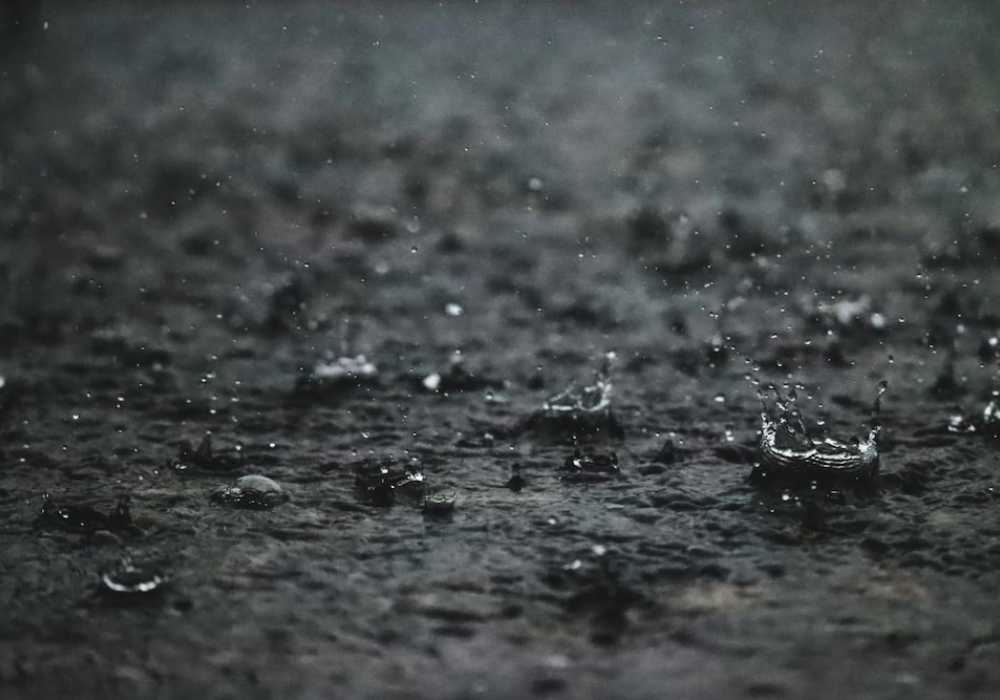
As a koi pond owner, it’s important to take some precautions to manage your pond during rainfall. Fortunately, there are some things you can do to manage your pond during rainfall such as follows:
Total Time: 10 minutes
1) Clear debris:
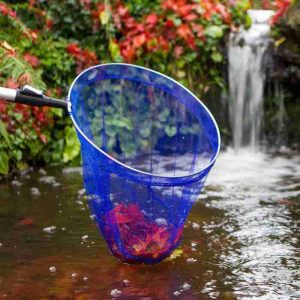
Before or during rainfall, ensure you clear any debris from around the pond so it doesn’t get swept into the water and pollute it. Clearing leaves and other debris out of the gutters and downspouts will help to prevent them from clogging and causing flooding.
2) Cover the pond:
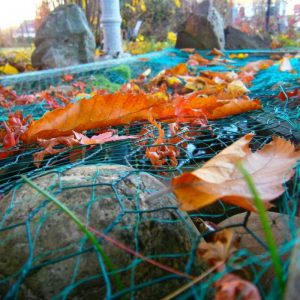
If possible, cover exposed areas of the pond with tarpaulin, plastic sheeting, or other types of coverage to prevent leaves and other debris from getting into the water.
3) Monitor pH levels:
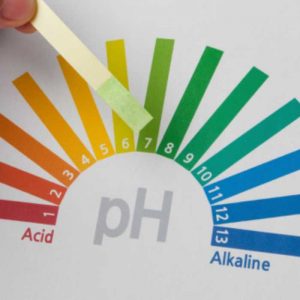
Test the pH levels of the water before and after rainfall to make sure they remain within a safe range for your fish. Adjust accordingly if necessary.
4) Reduce pond water level:
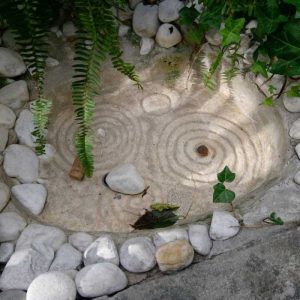
If you have time before it rains, you can try to empty out some of the water from your pond using a submersible pump. This will help to prevent the pond from overflowing.
5) Keep an eye on electric cords:
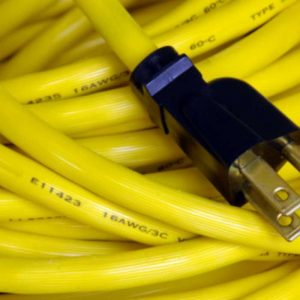
Make sure all electric cords and devices are away from the water and out of reach of kids or animals.
6) Be prepared for power outages:
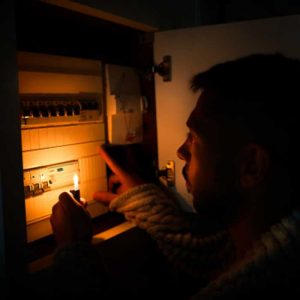
Have a backup plan in place in case of a power outage. If your pond has a filter, make sure you have an emergency power source to keep it running.
7) Move Plants:
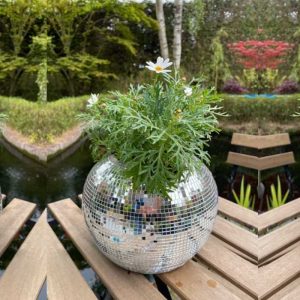
If you have any potted plants around your pond, you should move them indoors if possible or cover them with tarps (tarpaulin) to protect them from the rain.
How To Properly Manage Your Koi Pond After Rainfall?
After rainfall, it’s important to take some steps to manage your koi pond and ensure the water quality is still safe for your fish. Some things you can do to manage your pond after rainfall include:
1) Check the pond for debris:
Remove any leaves or other debris that may have blown into the pond during the storm.
2) Check the pH levels:
Test the pH levels of the water to compare with the previous level before the rain, then adjust accordingly if necessary.
3) Clean the filter:
If your pond has a filter, make sure to clean it according to the manufacturer’s instructions.
4) Test the water:
Test the pH levels of the water and adjust accordingly if necessary. You should also test for ammonia, nitrites, and nitrates. If the levels are too high, you may need to do a water change.
5) Vacuum the pond:
Ease the workload off your pond filter by using a pond vacuum like the CleanSweep 1400 Muck and Debris Pond Vacuum with a 13′ Intake Suction Hose to remove any debris or dirt that may have gotten into the water during rainfall.
6) Clean Your filter:
Check the pond filter and clean it if necessary. If you have a biological filter, make sure you don’t disturb the beneficial bacteria colonies.
7) Do a partial water change:
If the water quality is not up to par, you may need to do a partial water change by directing a hose from the overflow pipe to drain the water away from your pond. Be sure to remove any debris from the bottom of the pond before adding fresh water.
Signs That Indicate Your Koi Pond Needs Immediate Management?
When it rains, two things can happen to your koi pond that will indicate the need for immediate management:
- Either the water level in your pond will rise: If the water level in your pond rises too high, it can cause flooding and damage to your property. It can also create an ideal environment for mosquitoes to breed, which can transmit diseases to your koi fish.
- Or the quality of the water will change: If the quality of the water changes after rainfall, it could be due to runoff from agricultural fields or lawns. This runoff can contain pesticides, herbicides, and fertilizers that can be toxic to your koi fish. It can also introduce new algae and aquatic plants into your pond that can compete with your koi for food and oxygen.
If either of these two things happens, you will need to take immediate action and perform quick pond maintenance to manage your koi pond.
Will My Koi Pond Overflow During Heavy Rain?
If your koi pond is not constructed and managed properly, it’s possible it will overflow during heavy rains. Koi ponds should be designed to handle the largest amount of rain your area typically receives in a 24-hour period. This is called the “25-year, 24-hour storm.”
To find out how much rain this is in your area, use this point precipitation frequency estimator to find out for your area or check with your local weather bureau or cooperative extension office. They will have records of past storms and can give you an estimate of what to expect in the future.
Your koi pond should be built so that it can handle this amount of rain without overflowing. If your pond does overflow, it could damage your property or even harm your koi.
Frequently Asked Questions
What Should I Do If My Koi Pond Overflows After Heavy Rain?
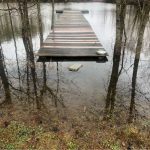
If your koi pond does overflow after heavy rain, there are a few things you can do to minimize the damage.
1) First, try to drain the excess water from your pond.
2) If you are unable to immediately drain the excess water, you should try to protect your koi from the overflow and move them to a different pond or tank.
3) You should also take steps to protect your property from overflow. If the water is spilling onto your lawn, you should try to divert it away from any areas that could be damaged.
If the overflow is significant, you may need to call a professional to help you manage the situation.
Why Is Pond Muddy After Rain?
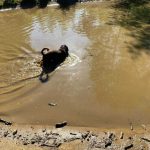
Your pond water might become murky and cloudy because rainwater carries with it sediment and other debris that can dilute and settle at the bottom of your pond.
Why Does My Pond Turn Green After Rain?
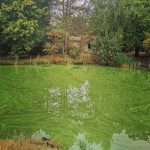
There are two primary reasons why your pond water may turn green after rain.
1) Increase of nitrogen and phosphorus in the water: The first reason is due to an increase in the amount of nitrogen and phosphorus in the water. These nutrients are typically found in runoff from fertilized lawns, gardens, and agricultural fields. When it rains, this water runs off into ponds and other bodies of water, causing the nutrient levels to rise.
2) Explosive growth of algae in the water: The second reason why pond water may turn green after rain is due to an increase in the amount of algae in the water. Algae thrive in warm, sun-lit water that is rich in nutrients. So when it rains and the water temperature rises, the algae will begin to grow and multiply, causing the water to turn green.
Why Is There Dead Fish In Pond After Rain?
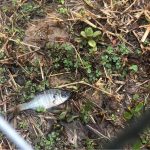
The most common reason why fish may die after it rains is that rain can cause oxygen levels in ponds to drop dramatically. This is especially true if the pond is stagnant or has a lot of vegetation. The rain can also stir up sediments and pollutants that can be harmful to fish. In some cases, heavy rains can even cause ponds to flood, which can wash away fish or damage their habitat.
In Conclusion
Rainfall can be a double-edged sword for koi pond owners. On one hand, rain can provide much-needed water to top off the pond and help maintain ideal water levels. On the other hand, heavy rains can wash away debris and dirt from the surrounding area into the pond, polluting the water and harming the fish.
To manage your koi pond during rainfall, it is important to keep an eye on the forecast and be prepared to cover or remove any pumps or filters that could be damaged by flooding. You should also remove any dead leaves or other debris from the pond before a storm hits to minimize the amount of pollution that could enter the water.
After rainfall, it is important to check the pond for any signs of pollution, such as an oily sheen on the water or dead fish. If you find any pollution, you should take steps to remove it and improve the filtration of your pond. You should also check the levels of dissolved oxygen in the water and take steps to increase aeration if necessary. By taking these precautions, you can help ensure that your koi pond stays clean and healthy during and after rainfall.

I’m Akin Bouchard. Even though I now own several different fish species, I first became a koi pond owner because I loved these creatures and wanted to turn my passion into something more serious. I take pride in my collection of koi fish and love sharing my knowledge with others interested in these beautiful creatures.
A Comprehensive Guide to Training Your Fish to Perform Amazing Tricks Feats

